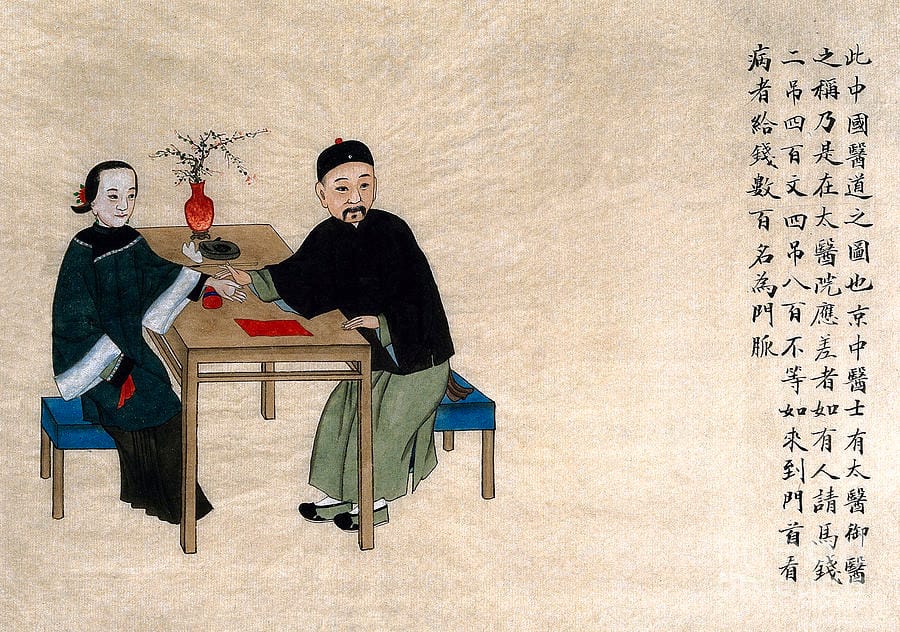Great Medicine: Mahābhaishajya.

“You can’t bite your own teeth. You can’t taste your own tongue. And you can’t touch the tip of your finger with the tip of the same finger. And that is why there is always an element of profound mystery in the problem of who we are” ― Alan Watts
The paradoxical problem of self-awareness is that the object you’re looking for (yourself) is the subject that’s looking for it.
It’s easy to look out at the world and see an overwhelming number of problems...
The direction of society, your reflection in the mirror, talking to… anyone? Problems. Problems everywhere.
More people view themselves and their society as sick. Unhealthy, off track, unethical. Sick, ill, dying.
But what if…
What if it isn’t the world that’s sick? What if it’s not reality that’s broken? What if I’m the one wearing ‘sick-coloured glasses’, and everything looks broken because of that?
The opposite of rose-coloured glasses. Sick-coloured glasses. It’s not the world that’s sick; it’s my way of seeing that’s dysfunctional.
This is the first and final illness we face as human beings.
And it was through the discovery of this Great Illness that the ultimate medical diagnosis, prescription, and treatment were born:
The Four Noble Truths of Buddhism.
Mahābhaishajya: Great Medicine.
Mahayana is one of the two core branches of Buddhism. Mahayana translates to ‘Great Vehicle’. Self-explanatory.
With AI, I stumbled into the term Mahābhaishajya: Great Medicine. From the Sanskrit roots for 'great' and 'medicine'.
From the times of ancient India, and still to this day, physicians follow a standard presentation and discussion with patients:
(1) Diagnose the illness.
(2) Identify the cause(s) of the illness.
(3) Advise whether the illness is treatable.
(4) Present the treatment plan.
You’ve heard this several times in your life. Everything from cancer to the common cold is presented this way:
(1) Yep, it’s the flu. That’s the runny nose, fever, sweats.
(2) Probably got it from that student in your class.
(3) Don’t worry, we can take care of it.
(4) Take this pill, get a ton of fluids, and rest.
This is what the 4 Noble Truths of Buddhism are. They are a diagnosis, prescription, and treatment for an illness.
Great Medicine, for a Great Illness.
But what illness? What medicine? What is prescribed?
The medical presentation of the 4 Noble Truths is:
- Diagnosis of Illness: The first noble truth is that our lives are characterized by suffering or unsatisfactoriness. The Buddhist word for this is dukkha. Often translated as suffering, though I find unsatisfactoriness much more helpful.
- Cause of Illness: The second truth is that the cause of dukkha is craving. Known as tanha—literally ‘thirst’—it refers to cravings, attachments, ‘clenching’, and personal desires.
- Healing of Illness: The third truth is that if we can end craving, we can end suffering. This is known as nirodha, or cessation. Acknowledging that the end of the illness/suffering is possible.
- Treatment Plan: Finally, the fourth truth is that the way to end this craving–the treatment protocol–is to follow the Eightfold Path.
"You are sick. You are suffering because you are sick. You are sick because you desire things to be other than they are. Fortunately, this is treatable. Healing this requires committing to and walking the Eightfold Path."
This is one reason why Buddhism appeals to so many Westerners. It aligns with a clear, empirical, methodical approach.
It is a diagnosis, a prescription, and a treatment plan. Follow the treatment, see the results, get better.
Mahābhaishajya. Great Medicine, for a Great Illness.
Happy healing,
EB.
No spam, no sharing to third party. Only you and me.
